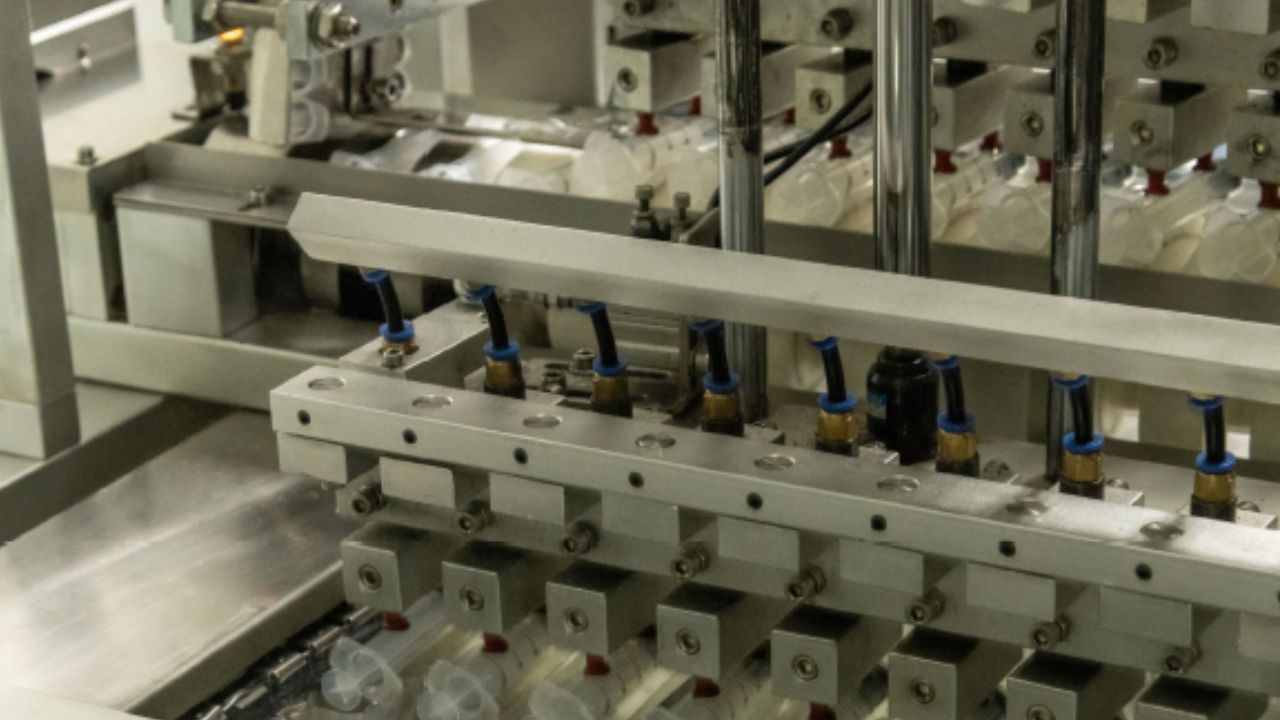Operating rooms worldwide face mounting pressure. Elective backlogs, an aging population and a limited surgical workforce mean more patients are waiting longer for procedures. At the same time, surgeons must manage increasingly complex environments — balancing advanced imaging, robotic systems and data streams that compete for attention.
AI is beginning to address some of these challenges. Rather than replacing surgical skills, early deployments focus on targeted support, such as camera control, guidance overlays and workload reduction. The goal is to preserve surgeon concentration and efficiency without adding new burdens.
This is the backdrop for a milestone achieved in Santiago, Chile, where Dr. Ricardo Funke performed a gallbladder procedure using Levita Magnetics’ magnetic-assisted robotic platform (MARS) equipped with an AI-guided autonomous camera. The AI functionality is currently in development and is not yet commercially available in the US or globally, pending regulatory clearance.
The system was developed under the leadership of Dr. Alberto Rodriguez-Navarro, Founder, President & CEO of Levita Magnetics. Earlier in 2025, the system surpassed 1,000 clinical cases, including a landmark procedure at Stanford, underscoring its growing adoption before this AI advancement.

Founder, President & CEO
Levita Magnetics
The pioneer of magnetic surgery — a technique that reduces the number of incisions in minimally invasive procedures — Dr. Rodriguez-Navarro is also a surgeon, inventor and entrepreneur with more than a decade of clinical experience.
In this interview, he explains why autonomous visualization is an important first step, how augmented reality (AR) and telementoring fit into the future and what responsible autonomy looks like in surgery.
Why The Santiago Case Matters
For Dr. Rodriguez-Navarro, the significance lies in moving from controlled experiments to clinical reality. Bench and animal studies are useful, but they don’t face the high bar of patient safety, validation and regulatory scrutiny.
Demonstrating autonomy in a real patient procedure signals progress toward responsible, surgeon-focused use of AI.
“Robots will be the physical expression of AI,” he says, framing the case as evidence that surgical autonomy is becoming tangible rather than theoretical.
For Levita Magnetics, this autonomy is centered on its AI-powered software, which controls the positioning of a standard laparoscopic camera.
Camera manipulation has long relied on assistants or surgeon-operated inputs like foot pedals. Levita’s AI-driven solution allows autonomy to be toggled on or off. When activated, the camera tracks the operative field on its own. The intent is not novelty but utility: reducing the mental load so the surgeon can concentrate on critical dissection.
-Dr. Rodriguez-Navarro notes that feedback from early use has been strongly positive, with surgeons describing procedures as smoother and less affected by camera-related distractions.. The next step is to quantify those impressions by measuring operating-room time, task efficiency and complication rates.
“The beauty with AI is that you release the surgeon…The camera follows you in an autonomous way, really showing you what you need,” he says.
When asked if this would mean surgeons would find their “perfect assistant,” Dr. Rodriguez-Navarro reasoned that the main motivation for autonomy comes from the variability of human assistance.
With a skilled assistant, operations can feel seamless; with a less experienced one, visibility suffers, time increases and stress rises, sometimes affecting recovery outcomes. By integrating magnetics, robotics and AI, Levita aims to create a more consistent environment where surgeons always have reliable support.
Combining AR, Robotics and Magnetics
Levita’s history reflects a willingness to combine modalities. The company first pioneered magnetic-assisted laparoscopy, then introduced AR into surgeries and is now incorporating AI into its robotic platform. Future work will involve blending AR and AI so that visual guidance can be superimposed in real time, not only on a screen but within the entire operating context.
The vision extends to telementoring and tele-assistance. Full telesurgery remains technically possible but raises governance questions about responsibility. For now, the priority is keeping the surgeon in the room, supported remotely or with AI-driven assistance.
“You can bring superimposed images, [and] have more advanced guidance… We want to start combining AI with augmented reality,” he explains.
So what do we know about telementoring in practice?
Telementoring allows a more experienced surgeon to observe and provide real-time advice remotely. AR can enhance this by showing the entire OR setup, enabling guidance on patient positioning, port placement or table adjustments. The next progression is tele-assistance, which involves limited remote actions that aid the on-site surgeon.
Full telesurgery, though feasible, still requires answers to accountability and regulatory concerns.
Dr. Rodriguez-Navarro cautions that proposing advancements is not enough; they must be backed by evidence.
Every new feature, he stressed, must follow a clear sequence: prove safety first, then demonstrate utility. Levita uses extensive hazard analysis, simulations and validation before introducing technology into the OR. Effectiveness is then measured in terms of whether surgeons can perform better, thereby being more focused, less distracted and ultimately with better outcomes for patients.
Clinical Trial Design with Utility in Mind
His background in first-in-human studies informs Levita’s approach to trial design.
Endpoints must reflect real surgical utility, not just technical specifications. This includes evaluating workload, efficiency, complication proxies and patient recovery.
Continuous surgeon involvement throughout design helps uncover rare or unexpected situations in the OR that can affect system reliability.
Training without Dependence
A recurring theme is the danger of creating “technology handicaps.” If a robotic system fails mid-procedure, surgeons should be able to complete the operation safely with core laparoscopic or open techniques.
Dr. Rodriguez-Navarro believes training should expose surgeons to a wide range of modalities, ensuring adaptability rather than dependency.
“Support the surgeon, but don’t make it a handicap,” he says.
He compared it to relying too heavily on general AI tools, where overuse can dull core skills.
Levita’s priorities follow a clear hierarchy. The patient comes first, with outcomes and recovery times at the center.
The surgeon follows, with emphasis on usability and workflow.
Hospitals also factor in, where staffing efficiency and cost must be balanced. Technologies that are prohibitively expensive risk limiting access, undercutting their broader impact.
For Dr. Rodriguez-Navarro, designing with global reach in mind requires careful cost discipline.
Why Adoption Is Challenging
Introducing AI in surgery is not fast or simple. It requires a combination of deep hazard analysis, thorough validation and strong collaboration between clinicians and engineers.
Levita has built a diverse advisory network of academic and community surgeons across the US and Chile to stress-test their designs in varied environments.
For autonomy to gain wide adoption, it must demonstrate clear comparative value. Surgeons may feel more comfortable and focused, but studies must show measurable improvements in time, efficiency and patient safety.
“It’s not just [that] technology is cool. You really have to have some outcome to measure,” he notes.
Guidance for Future Surgeons
Dr. Rodriguez-Navarro advises the next generation of surgeons to maintain core surgical skills, train across platforms and observe diverse practices worldwide. Those who are adaptable and not tied to a single tool will be more valuable, he argues, because they can tailor techniques to individual patients and circumstances.
Looking to the future, Levita is now working on integrating AR and AI for advanced guidance, introducing stepwise autonomy features beyond visualization and expanding the platform into new surgical indications.
And each step will follow the same pattern: incremental progress, strong validation and a focus on genuine clinical utility.
AI is already making its mark in surgery by giving doctors clearer, more detailed views during operations. New systems can cut through smoke, add depth to images and even layer 3D scans onto the patient for guidance.
For Dr. Rodriguez-Navarro and Levita Magnetics, the future of surgery is not about replacing surgeons but supporting them with consistent, intelligent assistance. By combining magnetics, robotics, AR and AI, the company hopes to enable better patient outcomes and a more adaptable surgical workforce.
If you want your company to be featured on Xtalks.com, please email [email protected].











Join or login to leave a comment
JOIN LOGIN